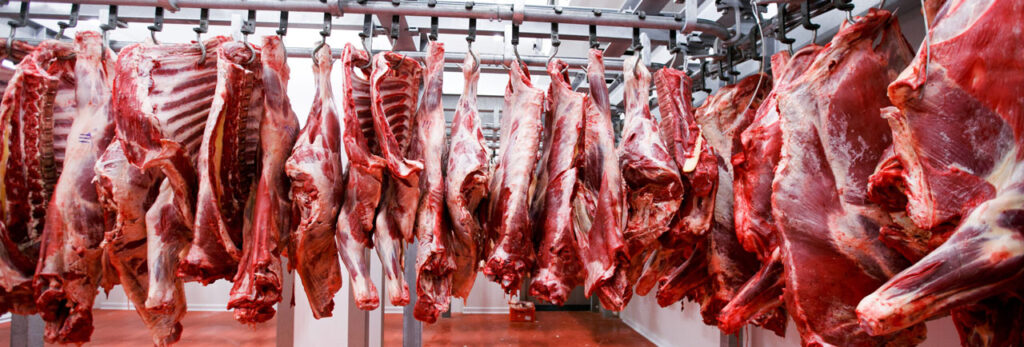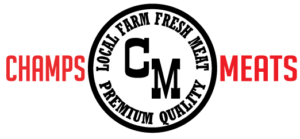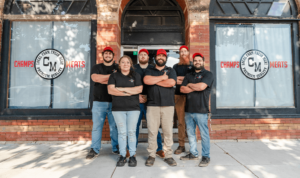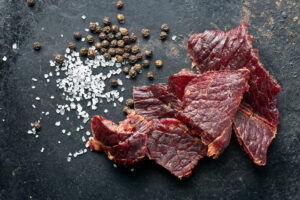
CHAMPS MEATS COMPLETE GUIDE TO BUYING BEEF
When it comes to buying an entire beef, it’s important to know what you’re looking for and how to communicate your needs to the butcher. If you want to buy beef in bulk, purchasing a whole, half, or quarter of a cow can be a great way to save money and ensure you have high-quality meat for your family. However, it can also be intimidating if you’ve never done it before. This guide will walk you through buying a whole, half, or quarter of beef and give you some tips on preparing for the initial cost.
GUIDE TO BUYING BEEF
Step 1: FIND A LOCAL FARMER OR BUTCHER TO BUY YOUR BEEF
As mentioned earlier, finding a local rancher or farmer who raises cattle is the first step in buying an entire beef. Start by asking friends, family, and neighbors if they know anyone who raises cattle. If you’re having trouble locating a local rancher or farmer, you can contact us, and we’ll help you find one.
Step 2: CHOOSE YOUR CUT AND PROCESSING PREFERENCES
Once you’ve found a supplier, you must decide on your cut and processing preferences. This includes choosing the type of beef you want (e.g., grass-fed, grain-fed, organic), the cut of meat (e.g., sirloin, ribeye, ground beef), and how the heart is processed (e.g., vacuum-sealed, aged, dry-cured). Next, consider your freezer space and how quickly you can consume the meat.
- All steaks should be cut to 1 – 1 1/2 inches thick.
- Porterhouse, T-bone, strip, and tenderloin steaks should be cut to your preferred thickness.
- Short ribs can be cut into small sections or left whole.
- Sirloin should be cut into steaks or left whole for roasting.
- Flank steak should be cut into thin slices against the grain.
- Chuck roast should be cut into roasts or ground for hamburgers.
- Bottom round, top round, and eye of round roasts can be cut to your preferred thickness.
- Stew meat should be cut into small pieces.
- Brisket should be left whole or cut into smaller sections.
- Cube steak should be cut thin and tenderized.
- Everything else should be cut to your preferred size and thickness

Step 3: CALCULATE THE COST
The cost of a whole, half, or quarter cow will vary depending on the animal’s weight, the cut and processing preferences, and the local market price for beef. To calculate the cost, you will need to know the price per pound of the animal, as well as the hanging weight (the weight of the animal after it has been slaughtered but before it has been processed). It’s important to note that the hanging weight is not the same as the processed weight (the weight of the meat after it has been cut and packaged), which will be lower due to trimming and loss of bone and fat. You should also factor in the cost of processing and any additional fees, such as delivery or storage.

STEP 4: PREPARE FOR THE INITIAL COST
Buying a whole, half, or quarter of beef can be a high upfront cost, so preparing financially is essential. You may need to save up for a few months or adjust your budget to accommodate the price. It’s also a good idea to plan for the storage of the meat, which may require investing in a giant freezer or renting freezer space.
Beef Yield Information: When purchasing a whole, half, or quarter of beef, it’s essential to understand the different measurements used to determine the final yield of meat. Here’s a breakdown of the key terms:
Cooled Hanging Weight: This is the animal’s weight after being slaughtered, and the internal organs, head, and hide have been removed. The carcass is then chilled to about 38°F to 40°F to age the meat and make it more tender. The cooled hanging weight is typically about 60% to 65% of the animal’s live weight.
Dressing Weight: This is the weight of the carcass after it has been skinned, gutted, and trimmed of excess fat and bone. The dressing weight is typically about 75% to 80% of the cooled hanging weight.
Processed Weight: This is the weight of the meat after it has been cut, trimmed, and packaged. The processed weight is typically about 60
STEP 5: PICK UP YOUR BEEF
Once the meat has been processed, you must pick it up from the butcher. Ensure you have enough space in your freezer to store the beef, as it will take up a lot of room. It’s a good idea to bring coolers or insulated bags to transport the meat, especially if you have a long drive ahead of you.
In conclusion, buying an entire beef can be a cost-effective way to ensure a consistent food source, especially during meat shortages. By following these steps, you can navigate the process of buying an entire beef and get exactly what you want from the butcher.
While buying beef can be daunting, it doesn’t have to be. Our highly qualified and skilled butchers are ready to help you through the process.
7-10 CHARACTERISTICS OF A GOOD QUALITY MEAT | WHEN BUYING MEAT WHAT SHOULD YOU CONSIDER FIRST | CHARACTERISTICS OF GOOD QUALITY BEEF







